Why you can trust Tom's Hardware
To read about our monitor tests in-depth, please check out Display Testing Explained: How We Test PC Monitors. We cover brightness and contrast testing on page two.
Uncalibrated – Maximum Backlight Level
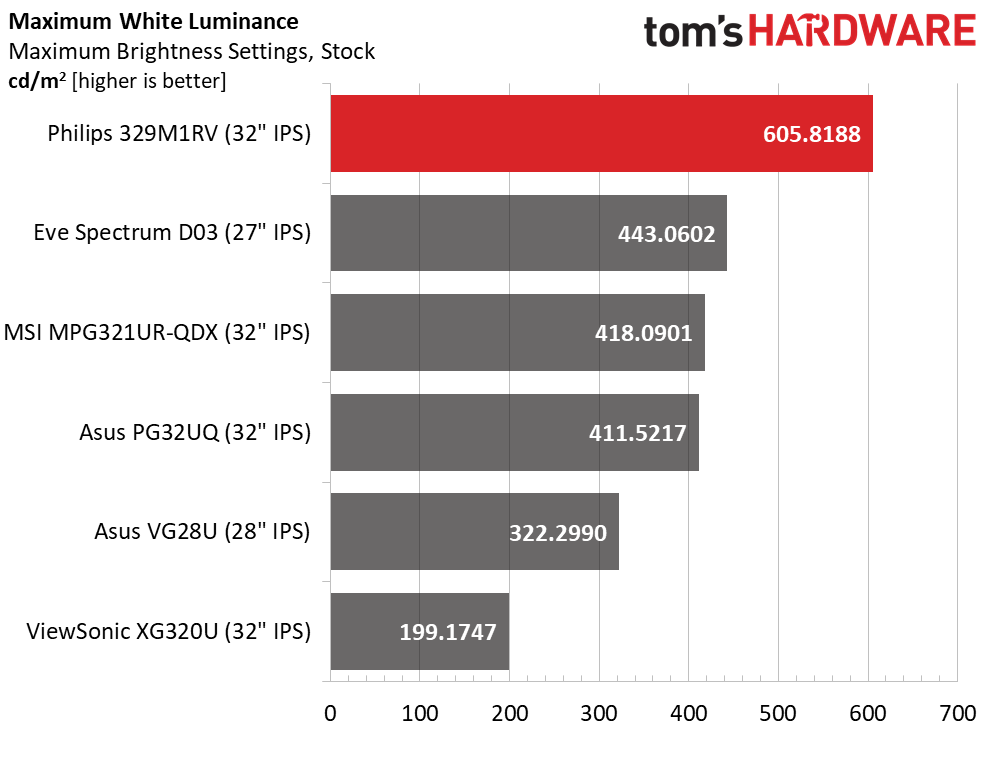
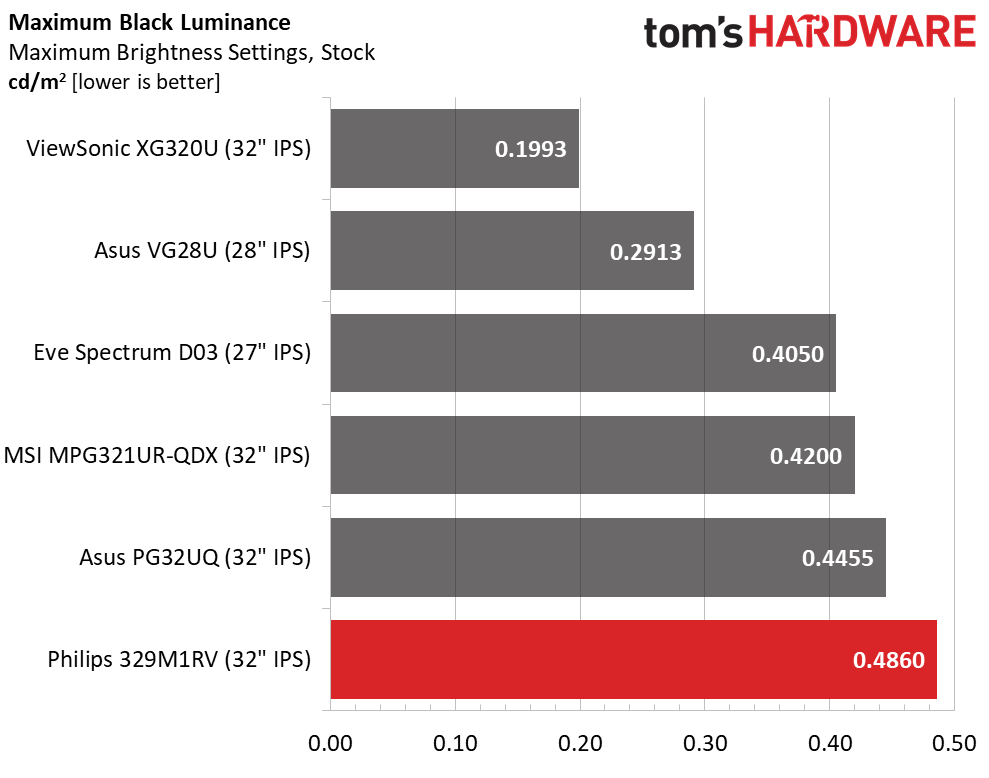
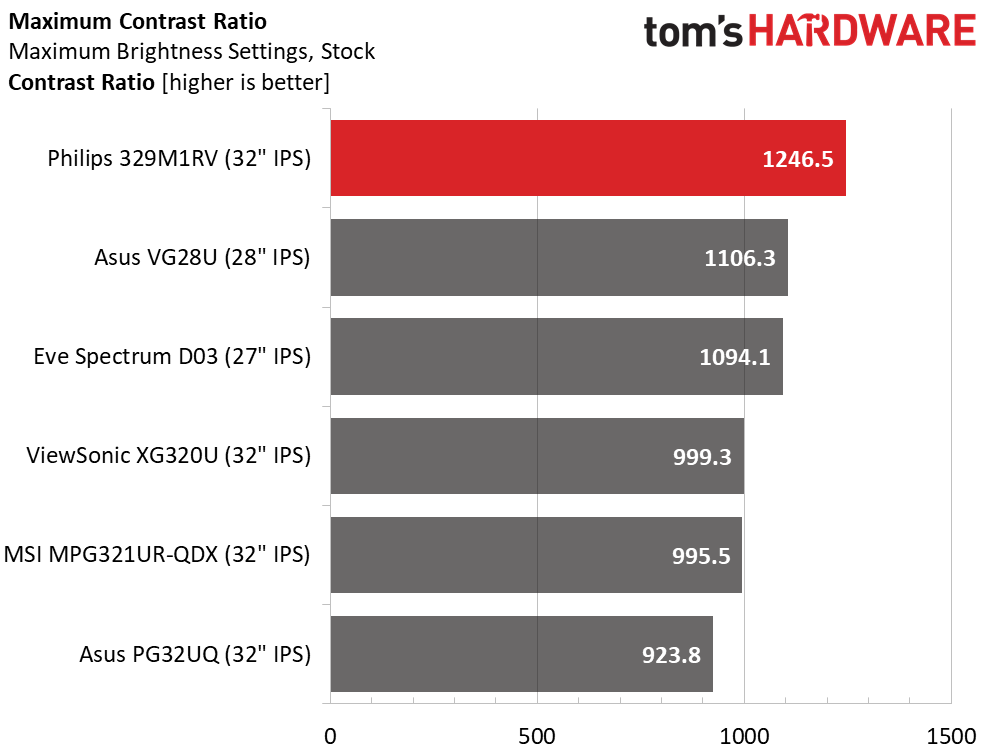
The 329M1RV is rated for 400 nits, but I found much more brightness than that in both SDR and HDR modes. The SDR peak was over 605 nits, which is incredibly bright for such a large screen. You’ll never turn the brightness slider up all the way, unless you plan to game poolside in direct sunlight. The only drawback is that each click of the slider changes output by 3 to 4 nits. It’s hard to be precise when setting levels, but this is a minor complaint. The black level is relatively low, which makes this one of the more contrasty IPS panels I’ve tested. 1246.5:1 is a good bit higher than average for this tech.
After Calibration to 200 nits
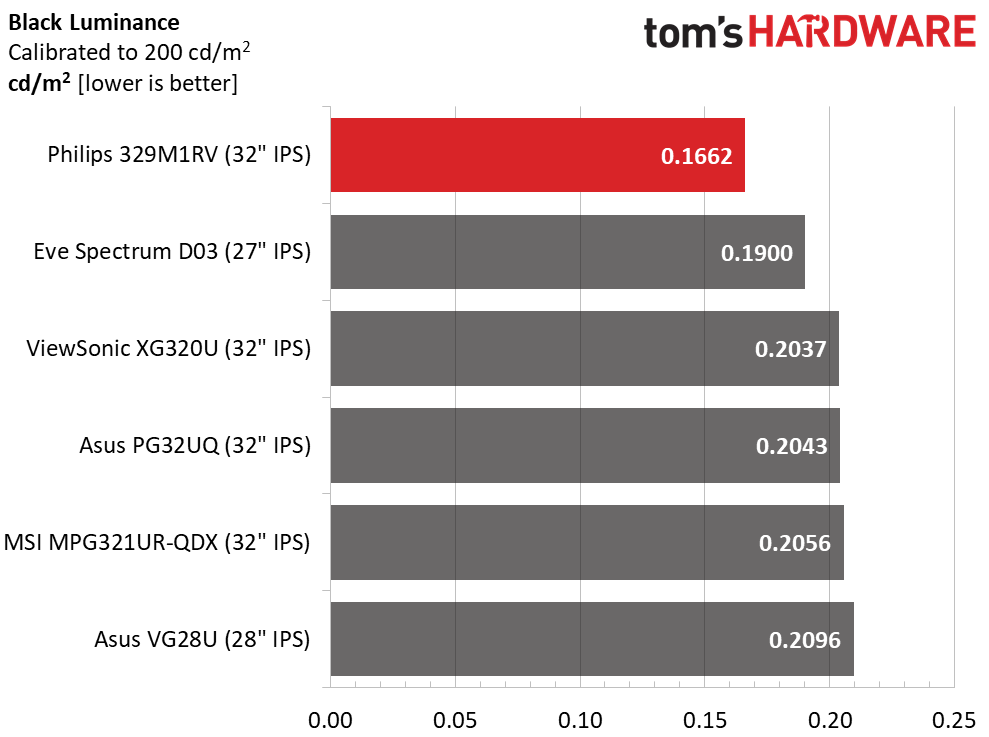
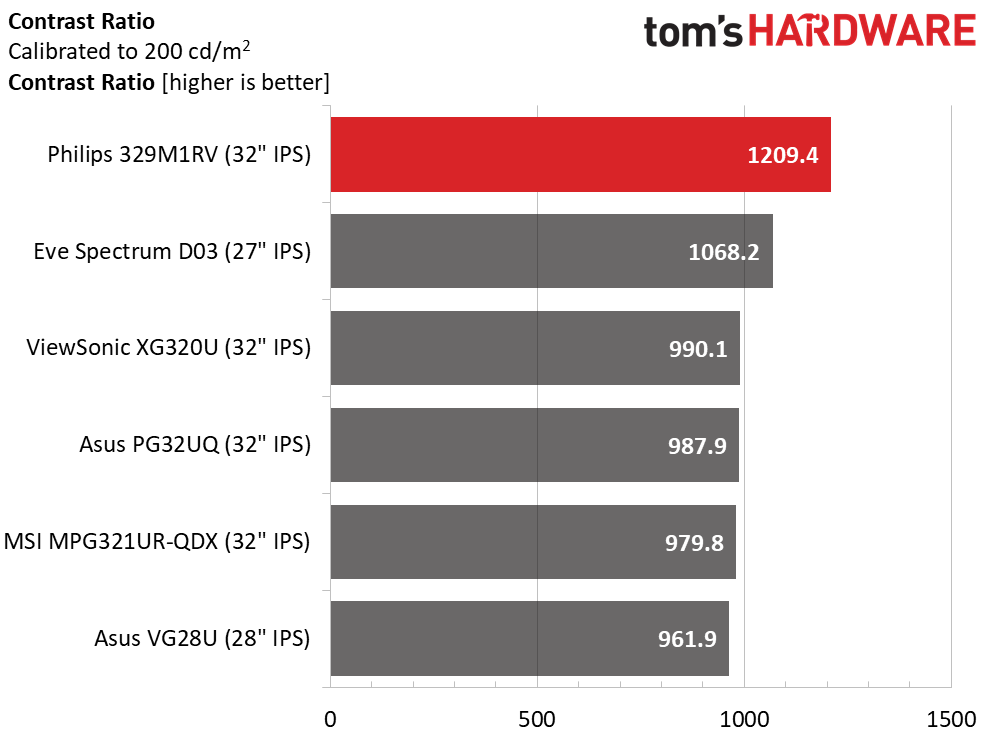
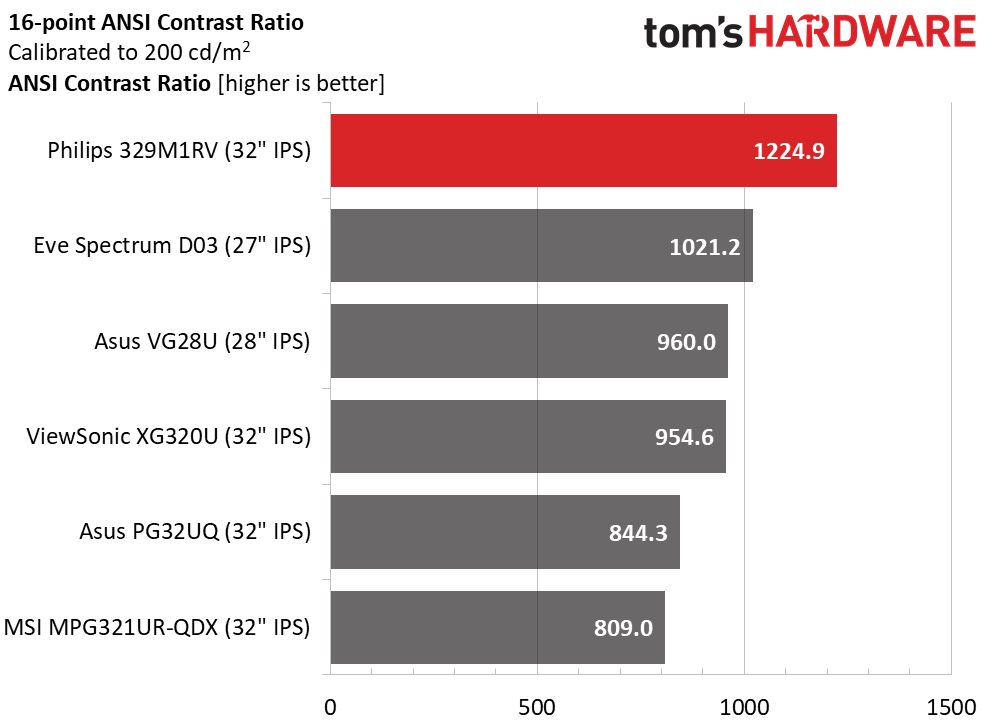
My calibration consisted only of lowering the brightness slider to achieve 200 nits peak output. This dropped contrast slightly but not visibly. The 329M1RV still has the highest contrast of the group. The gap to the Eve Spectrum is small but it can be seen in a side-by-side comparison.
The Philips employs a very high-quality panel in its construction. Its super-smooth screen uniformity contributes to one of the highest ANSI scores I’ve recorded for an IPS monitor. In practice, this makes for a very deep and lifelike image with vivid color and stunning detail.
Get Tom's Hardware's best news and in-depth reviews, straight to your inbox.
Current page: Brightness and Contrast
Prev Page Response, Input Lag, Viewing Angles and Uniformity Next Page Grayscale, Gamma and Color
Christian Eberle is a Contributing Editor for Tom's Hardware US. He's a veteran reviewer of A/V equipment, specializing in monitors. Christian began his obsession with tech when he built his first PC in 1991, a 286 running DOS 3.0 at a blazing 12MHz. In 2006, he undertook training from the Imaging Science Foundation in video calibration and testing and thus started a passion for precise imaging that persists to this day. He is also a professional musician with a degree from the New England Conservatory as a classical bassoonist which he used to good effect as a performer with the West Point Army Band from 1987 to 2013. He enjoys watching movies and listening to high-end audio in his custom-built home theater and can be seen riding trails near his home on a race-ready ICE VTX recumbent trike. Christian enjoys the endless summer in Florida where he lives with his wife and Chihuahua and plays with orchestras around the state.
-
edzieba A shame it has no HDR beyond the marketing sticker. No FALD, not even edge-lit local dimming. Just SDR with a boosted brightness level.Reply